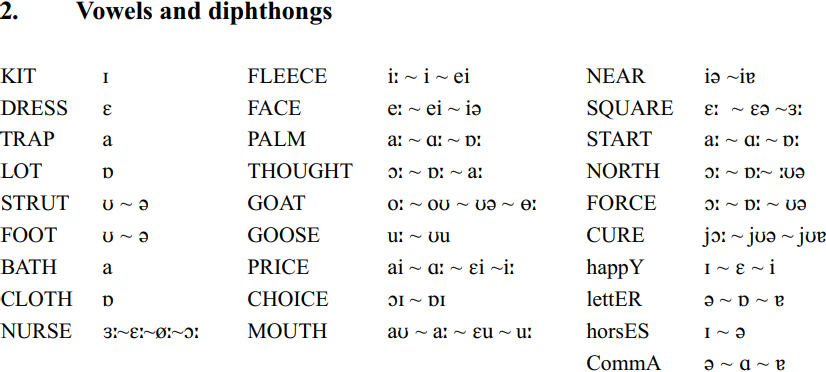


 Grammar
Grammar
 Tenses
Tenses
 Present
Present
 Past
Past
 Future
Future
 Parts Of Speech
Parts Of Speech
 Nouns
Nouns
 Verbs
Verbs
 Adverbs
Adverbs
 Adjectives
Adjectives
 Pronouns
Pronouns
 Pre Position
Pre Position
 Preposition by function
Preposition by function 
 Preposition by construction
Preposition by construction
 Conjunctions
Conjunctions
 Interjections
Interjections
 Grammar Rules
Grammar Rules
 Linguistics
Linguistics
 Semantics
Semantics
 Pragmatics
Pragmatics
 Reading Comprehension
Reading Comprehension|
Read More
Date: 2024-03-18
Date: 2023-09-01
Date: 2024-05-27
|
According to Wells (1982), “local differences in dialect and accent as one moves from valley to valley or from village to village are sharper in the north than in any other part of England, and become sharper the further north one goes” (Wells 1982: 351). In the light of recent studies which provide evidence of levelling in the North of England (discussed in 1.2 above), this may seem too bold a statement. Nevertheless, it is certainly the case that, even with regard to modern dialects, more features differentiate northern dialects from each other than are common to all of them. Even in areas where levelling occurs, new shibboleths are emerging to represent perceived differences between speakers living as little as 10 miles apart (cf. Beal [2000a] for an account of differences between ‘Geordie’ [Newcastle] and ‘Mackem’ [Sunderland]).
Whilst all northern dialects share certain phonological features, notably the short /a/ in BATH and ‘unsplit’ /u/ in FOOT/ STRUT, others differentiate dialects within the North. Some of these distinctions are not strictly geographical, except insofar as they distinguish the more traditional speakers in rural areas from their urban neighbors. Even in the most remote corners of England today, young people attend high school and carry out leisure pursuits in larger towns and cities, so speakers of traditional dialects are likely to be older as well as rural. An example of a distinctive feature of traditional dialect can be found in the North-east, where increasingly only traditional dialect speakers have the Northumbrian burr  . However, other North-eastern features, such as /h/- retention, would be common to all speakers in this area, at least north of the Wear.
. However, other North-eastern features, such as /h/- retention, would be common to all speakers in this area, at least north of the Wear.
Other features distinguish dialect areas within the North from each other. In Trudgill’s account (1999: 65–75), the area which I have defined as the North in 1.1. above includes six dialect areas: Northeast, lower North, central Lancashire, Merseyside, Humberside and Northwest Midlands (the last of these includes Manchester). These divisions are arrived at on the basis of five phonological criteria: /h/-dropping/retention, monophthong versus diphthong in FACE, velar nasal plus in SING, rhoticity versus non-rhoticity, and the final vowel of happY. As we shall see, whilst these features do serve to distinguish the major dialect divisions in the North of England, they are not the only features which are salient.

|
|
|
|
كيف تساهم الأطعمة فائقة المعالجة في تفاقم مرض يصيب الأمعاء؟
|
|
|
|
|
|
|
مشروع ضخم لإنتاج الهيدروجين الأخضر يواجه تأخيرًا جديدًا
|
|
|
|
|
|
|
المجمع العلمي يختتم دورته القرآنية في فن الصوت والنغم بالطريقة المصرية
|
|
|